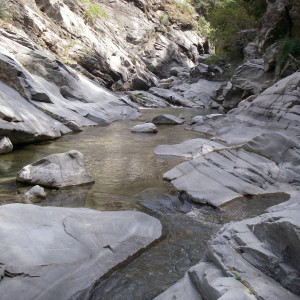Quantifying the processes acting to shape the Earth’s surface is crucial for predicting landscape response to anthropogenic disturbance, interpreting tectonic history and identifying active faults, and mitigating natural hazards (e.g., floods, landslides, debris flows). Our research is broadly focused on building a mechanistic understanding of erosion and sediment transport in mountainous landscapes. We use a diverse suite of tools to tackle problems related to surface processes and landscape evolution over a range of timescales – from the influence of wildfires on hillslope erosion over annual to decadal timescales, to long-term interrelations among climate, tectonics, and erosion, to the topographic expression of ancient sedimentary deposits on Mars.

Climatic and tectonic controls on river incision

Bedrock hillslopes and soil production

Tectonic geomorphology and landscape evolution in the San Gabriel Mountains, CA

Vegetation controls on post-fire sediment yield

Critical zone science

Planetary stratigraphy and surface processes